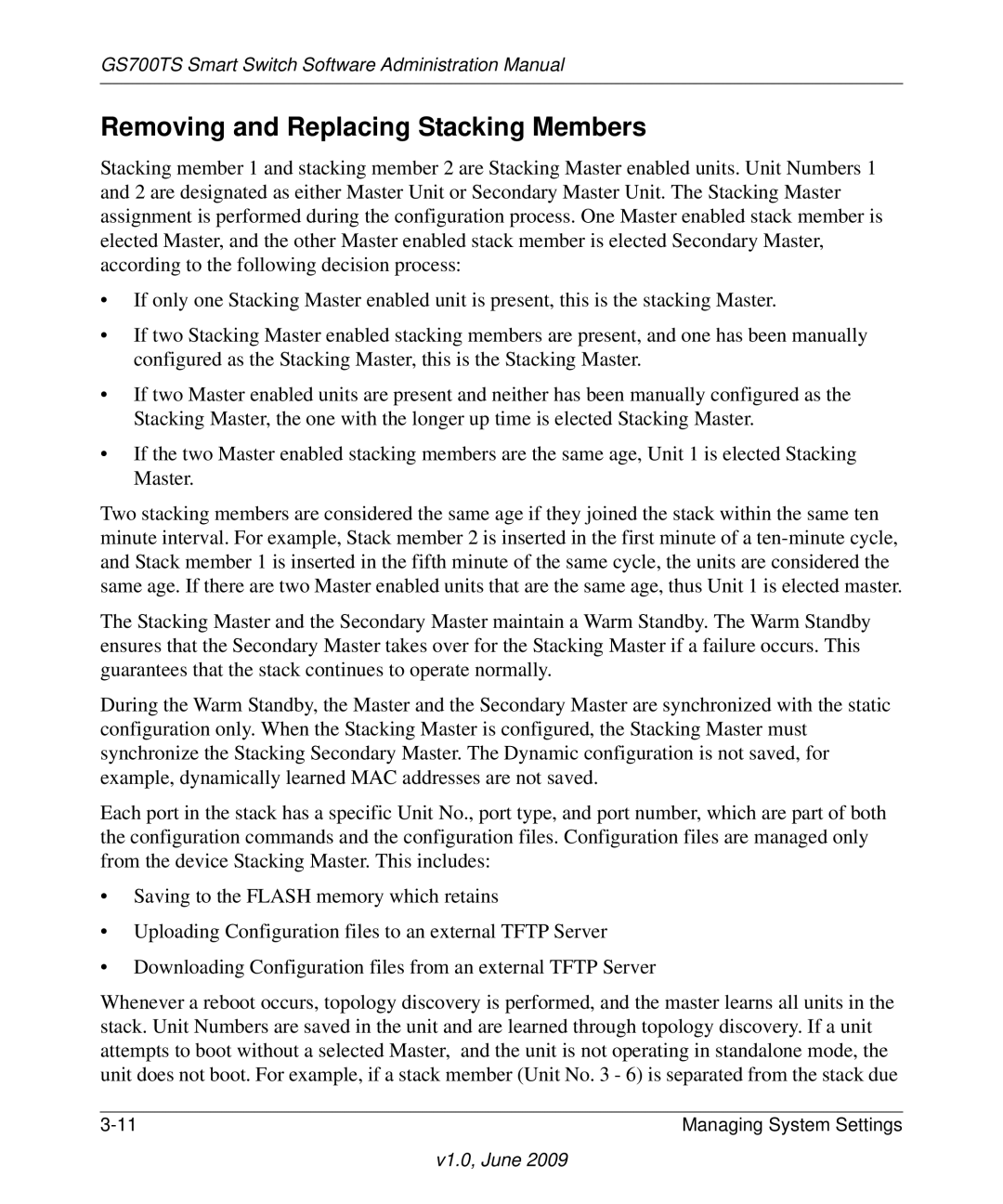GS700TS Smart Switch Software Administration Manual
Removing and Replacing Stacking Members
Stacking member 1 and stacking member 2 are Stacking Master enabled units. Unit Numbers 1 and 2 are designated as either Master Unit or Secondary Master Unit. The Stacking Master assignment is performed during the configuration process. One Master enabled stack member is elected Master, and the other Master enabled stack member is elected Secondary Master, according to the following decision process:
•If only one Stacking Master enabled unit is present, this is the stacking Master.
•If two Stacking Master enabled stacking members are present, and one has been manually configured as the Stacking Master, this is the Stacking Master.
•If two Master enabled units are present and neither has been manually configured as the Stacking Master, the one with the longer up time is elected Stacking Master.
•If the two Master enabled stacking members are the same age, Unit 1 is elected Stacking Master.
Two stacking members are considered the same age if they joined the stack within the same ten minute interval. For example, Stack member 2 is inserted in the first minute of a
The Stacking Master and the Secondary Master maintain a Warm Standby. The Warm Standby ensures that the Secondary Master takes over for the Stacking Master if a failure occurs. This guarantees that the stack continues to operate normally.
During the Warm Standby, the Master and the Secondary Master are synchronized with the static configuration only. When the Stacking Master is configured, the Stacking Master must synchronize the Stacking Secondary Master. The Dynamic configuration is not saved, for example, dynamically learned MAC addresses are not saved.
Each port in the stack has a specific Unit No., port type, and port number, which are part of both the configuration commands and the configuration files. Configuration files are managed only from the device Stacking Master. This includes:
•Saving to the FLASH memory which retains
•Uploading Configuration files to an external TFTP Server
•Downloading Configuration files from an external TFTP Server
Whenever a reboot occurs, topology discovery is performed, and the master learns all units in the stack. Unit Numbers are saved in the unit and are learned through topology discovery. If a unit attempts to boot without a selected Master, and the unit is not operating in standalone mode, the unit does not boot. For example, if a stack member (Unit No. 3 - 6) is separated from the stack due
Managing System Settings |
